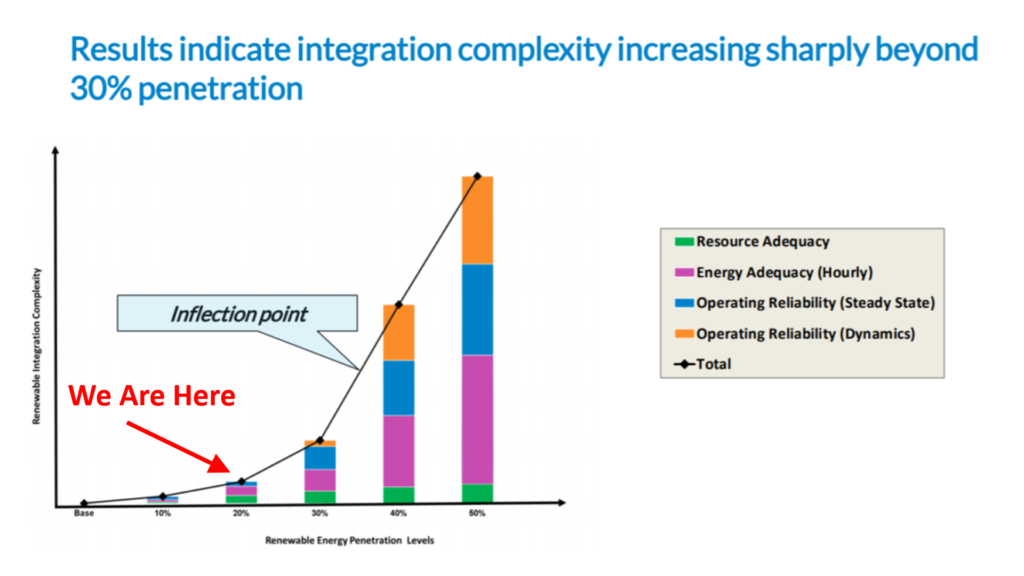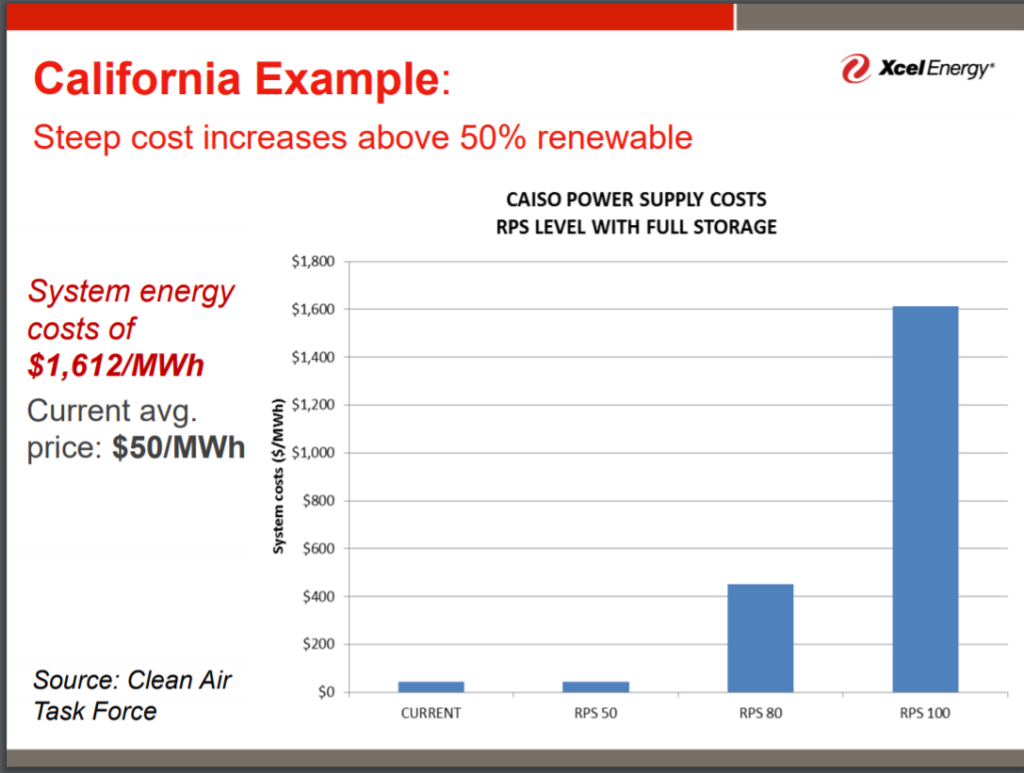Walz’s 100 Percent “Clean Energy” Mandates: Increasing Prices, Falling Reliability
On January 21, 2021, Governor Walz announced his administration is seeking to require 100 percent of Minnesota’s electricity to come from “clean energy” by 2040. The plan also seeks to increase mandates for energy conservation and reduce emissions from existing buildings by half by 2035. This proposal is, by far, the closest thing to the Green New Deal that has ever been proposed in Minnesota.
This article is the first in a series that will discuss everything you need to know about the impact these policy proposals will have on energy prices, reliability, and the environment.
Part 1 discusses the impact of Governor Walz’s proposed 100 percent “clean energy” by 2040 mandate will have on cost and reliability.
100 Percent Carbon-Free Electricity by 2040 and Clean Energy First
The press release issued by Governor Walz said he believes so-called clean energy is “the right and responsible choice for future generations,” but in reality, energy sources like wind and solar will make our electricity more expensive, less reliable, and hurt Minnesota’s economy for generations to come.
Walz’s press release makes it appear as if his 100 percent “clean energy” mandate and Clean Energy First (CEF) are different components of his energy plan, but if you have a new renewable energy mandate, then Clean Energy First is entirely redundant and unnecessary.
Mentioning CEF was most likely meant to throw a political bone to Senator Dave Senjem (R), the chair of the Senate Energy and Utilities Finance and Policy Committee. Senator Senjem supports CEF even though it will rubber-stamp Xcel Energy’s $57 billion plan to prematurely close their coal-fired power plants and build wind, solar, and natural gas plants. He will likely try to pass this bill in the Republican Senate this session.
What’s in the “Clean Energy” Mandate?
The Walz administration wants to increase Minnesota’s renewable energy mandate and require all electricity generated in the state to be carbon-free by 2040. However, the legislation does not legalize new nuclear power plants or allow large hydroelectricity facilities to count as “renewable” (even though they are). It does not allow for carbon capture and sequestration.
In other words, it is a 100 percent wind, solar, and battery storage mandate. This mandate would be impossibly expensive, and it would make our electric system subject to rolling blackouts because wind and solar are uniquely inefficient ways of generating electricity.
Skyrocketing Electricity Bills
Attempting to rely on wind and solar will cause our electricity costs to skyrocket, but this concept is difficult for most people to understand because they are constantly told that wind and solar are the cheapest forms of energy.
It’s true that solar and wind costs have declined substantially over the last 15 years (due in part to Chinese slave labor at solar facilities), but this view of the subject doesn’t account for the fact that when it comes to wind and solar, the sum of the parts is less than the whole.
Wind and solar advocates often cite the Levelized Cost of Energy (LCOE) values created by Lazard, but these advocates never discuss the massive disclaimer on the front page of every Lazard analysis, which I have included below:

In other words, the Lazard analysis does not account for the entire system cost of providing electricity on demand. This is a bit like boasting about the plummeting price of pepperoni while neglecting to mention the total price of the pizza.
It is much more difficult to rely on wind and solar to generate enough electricity because wind and solar only work if the weather is cooperating, which in Minnesota is only about 45 percent of the time for the best wind turbines, and 18 percent for solar facilities. This means reliable electricity sources, like natural gas, coal, or nuclear plants must also be on the grid. Minnesotans don’t pay for either renewables or reliables based on whichever is cheaper; they pay for both!
Not only do we end up paying for redundant sources of electricity generation, but we must also spend billions of dollars on transmission upgrades to add wind and solar to the grid. Adding more wind and solar while retiring coal plants will make it more difficult to make sure the electricity supply always matches demand.
This is why the local grid operator, the Midcontinent Independent Systems Operator (MISO), warns that it will become exponentially more difficult to maintain a reliable grid beyond 20 to 30 percent market penetration for wind and solar. With increasing difficulty comes increasing expenses.

The graph below is from Xcel Energy’s presentation to the Midwest Governor’s Association. It shows the estimated wholesale price of electricity in California if the Golden State were to try relying exclusively on wind, solar, and battery storage. The cost of providing electricity under this scenario skyrockets to $1,612 per megawatt-hour. For comparison, federal data show Xcel’s Sherburne County coal plant generates electricity for $33 per MWh!

Under this scenario, the average Minnesota family would see their electricity bill increase from $99 per month in 2019 to $1,223 every single month! This means the average Minnesota household would pay $14,600 per year in electricity costs alone.
It’s also important to remember that this likely underestimates the costs because wholesale power costs don’t account for the cost of transmission, utility profits, etc.
Electricity becomes so expensive because battery storage is much more costly than natural gas power plants. For example, just one day’s worth of battery storage in Minnesota would cost nearly $50 billion. Many analysts think we would need weeks, and maybe even months, of storage to go 100 percent wind, solar, and storage while providing reliable electricity around the clock.
Risking Rolling Blackouts
California learned the hard way that retiring coal, natural gas, and nuclear plants to depend on wind and solar is a recipe for electricity shortages. On August 14th and 15th, two million Californians lost power during a heatwave because the state has shuttered many of these reliable power plants. California’s grid operators said there was not enough electricity to meet demand because of a drop in wind production and the setting sun, which rendered California’s solar panels incapable of providing the much-needed power.
If we follow the same steps as California, we will suffer the same fate, but with worse consequences.
The power grid must remain reliable during the most extreme weather events. In Minnesota, the Polar Vortex of 2019 was a close call. Energy demands surged as temperatures were -29⁰ F, but as you can see in the graph below, wind and solar provided almost no electricity on this day because it was too cold for the wind turbines to operate and Xcel Energy’s solar panels were covered in snow.
Minnesota’s coal, natural gas, and nuclear fleet carried the day.

Flexibility Arguments Ring Hollow
Proponents of this legislation will argue that our concerns about reliability are unjustified because the legislation will provide enough flexibility for the Public Utilities Commission and utilities to allow reliable power plants, like natural gas plants, to continue operating to prevent blackouts.
This sounds nice until you realize that California’s grid operator was issuing dire warnings about reliability but these warnings were ignored for entirely political purposes. In California, like Minnesota, the Public Utilities Commission is a body of officials that are appointed by the Governor, which leaves commissioners subject to political pressure to carry out the Governor’s preferred policies.
In California, the results were rolling blackouts.
Conclusion
There’s a lot more to unpack here over the coming weeks, but the short version is that without legalizing new nuclear, large hydro, or carbon capture, Minnesota will be leaving its electricity supply to the vagueries of the weather. The result will be the worst of both worlds: skyrocketing costs and less reliable service.